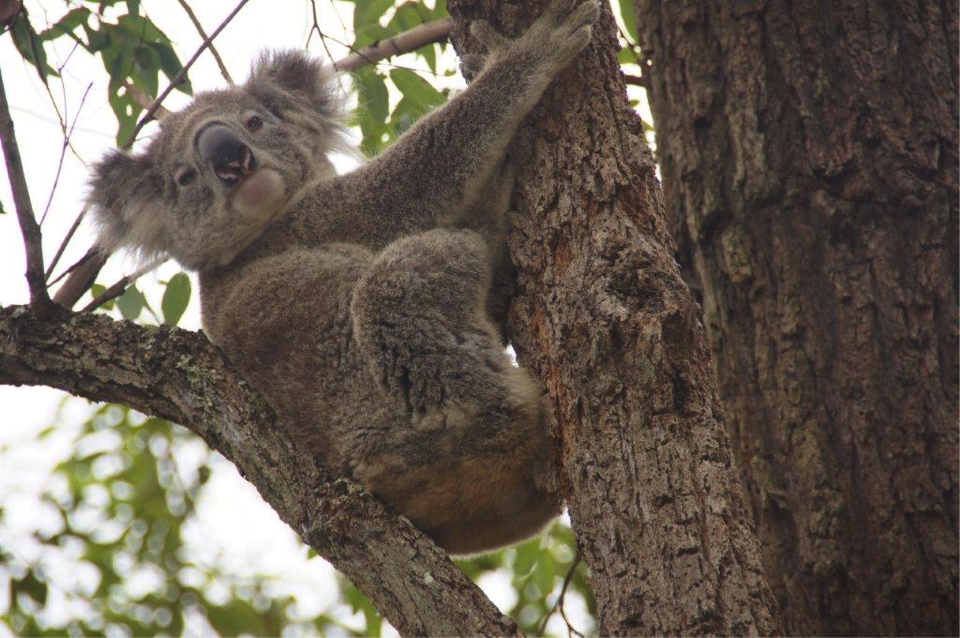Latest News
Kurrajong Koala Corridor project, six years on…
Saturday, 11th December 2021

“It was just such a great project from the very start” says Angie Fricker, of the Greater Sydney Local Land Services, about the Kurrajong Koala Corridor Project, “and a lot of it was kickstarted by landholders who attended the Hotspots workshops”.
In 2015, the Hotspots team delivered a workshop in the Bowen Mountain and Kurrajong area, a lush pocket of mixed sclerophyll forest and rainforest tucked in the foothills of the Blue Mountains, 75 km northwest of Sydney. As well as fire management, a particular concern of local landholders was Bell Miner Associated Dieback (BMAD) and the invasive weed, lantana. Hotspots ecologists explained how these environmental issues were all closely linked: as the forest understorey was being choked by lantana, native diversity was decreasing and fuel loads and flammability was increasing. The dense thickets of lantana were creating favourable nesting area for bell minor birds who actively “farm” sap-sucking psyllids, insects that feed on eucalypts. The increase in bell miners was causing an increase in psyllids, leading to the decline and eventual death of the eucalypt trees. The lantana was also inhibiting eucalypt seedlings from being able to grow and replace the dead trees, so it was a damaging cycle that needed to be broken.
Following the workshop, several landholders with properties impacted by BMAD were interested in ongoing weed control. Hotspots collaborated with Greater Sydney Local Land Services, who provided incentive funding, and Blue Tongue Ecosystems who worked with landholders to help them undertake weed management, restoration and ongoing ecological monitoring. One of the landholders was Garry Watterson. “We don’t really own the land, we’re just caretakers”, says Garry, and from his ongoing dedication to both the ecology and people of Kurrajong, you know he truly lives his life by these words.
With a keen interest in nature, science and community building, Garry says Hotspots and the associated BMAD restoration project helped him learn more about the exceptional biodiversity on his property and connected him with other landholders, local fire brigade members, local government agencies and other Landcare organisations including the Hawkesbury Nepean Landcare Network. Since then, over chats at street Christmas parties, morning teas and yarns over back fences, Garry has inspired countless other community members to get involved with conserving and protecting nature.
In 2018, when he heard of plans for a super highway to be built through Kurrajong, Little Wheeny Creek, and right through his property, he started a movement to get the project scrapped. Garry and a group of over 500 passionate community members attended the meeting with Transport NSW, armed with evidence of multiple threatened species, including koalas, a critically endangered shrub and an incredibly high diversity of birds living in the bushland right in the footprint of the proposed road. The community were successful in saving the astonishing biodiversity of Kurrajong and Little Wheeny Creek.
Now, the Kurrajong Koala Corridor Project helps to protect this genetically distinct koala population. Over 130 koala food trees were recently planted to strengthen the viability of this important corridor ( https://landcarensw.org.au/130-trees-planted-for-kurrajong-koalas/). Bell miner birds and associated dieback have decreased through ongoing weed control, plant and animal diversity has increased, and cameras set up in the bush show just how many different species are using this corridor. So, Little Wheeny Creek became a super highway (of another kind) after all.
Image: Garry Watterson